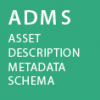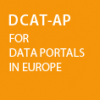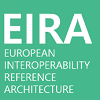Recommendation 42 | Conceptual model: Open data
Publish open data in machine-readable, non-proprietary formats. Ensure that open data is accompanied by high quality, machine-readable metadata in nonproprietary formats, including a description of their content, the way data is collected and its level of quality and the licence terms under which it is made available. The use of common vocabularies for expressing metadata is recommended.
Solutions
| List of all available solutions that implement this recommendation |
|---|

|
ADMS helps to ensure the presence of high quality and machine readable metadata published in non-proprietary formats. |

|
The use of CPSV-AP helps to publish data related to public services using a standardised Europen data model, hence ensuring cross-border and cross-sector interoperability. |

|
The use of Core Vocabularies can serve as the foundation of a common export format for data in base registries like cadastres, business registers and service portals. |

|
The use of CISE enables public administrations to publish maritime data in machine readable and non-proprietary manner, including a description of their content. |

|
DCAT-AP provides a non-proprietary specification for describing public sector datasets in Europe to enable the exchange of descriptions of datasets (metadata). |

|
The semantic view of EIRA contains an open data policy, which supports the publication of open data in machine-readable non-proprietary formats. |

|
The ELI includes technical specifications on metadata specifying how to describe legal information and a specific language for exchanging legislation in machine-readable formats. |
| The ELI validator is adapted to verify the conformance of ELI metadata, hence ensuring that countries publish their data in a structured machine readable format. | |

|
eTranslation helps to ensure publication of data in machine readable, non-proprietary formats. |

Location Framework Blueprint
|
Recommendation 13 of the EULF puts forward several provisions with regard to metadata management. For example, it encourages the implementation of an agreed metadata standard across the public sector, which is based on or is consistent with the INSPIRE approach. |

|
The common and shared European data model for publishing and sharing eMandates across borders helps to ensure the use of common vocabularies for expressing metadata in this domain across the European public administrations. |

|
Question D7 of the Service Delivery section of the IMAPS questionnaire assesses the extent to which common concepts and vocabularies are used by public administrations. |

|
The LEOS components use Akoma Ntoso which is a standard, in turn helping to ensure legal data portability. |

|
Terminologies and classification systems are published in machine-readable, non-proprietary formats for sharing and reuse, in order to facilitate multilingual semantic access to public information services. |

|
Structuring data in base registries helps to ensure its publication in machine-readable, non-proprietary formats. |

|
The ESS Statistical Enterprise Architecture contains a Infrastructure Building Block on “Data and Metadata Management”, in turn ensuring that European statistical data is accompanied by high quality machine-readable metadata. |
| VocBench3 supports the publication of non-proprietary metadata by providing a common platform for its management. | |

SIMAPS v1.0.0 |
Question C4 of the Service Consumption section of the SIMAPS questionnaire assesses the consumption of Linked Open Data sets from a public service. The higher the integration of LOD, the more advanced the public service is in terms of semantic alignment with the data. |





